This post may contain affiliate links. This just means I may receive a small commission at no extra cost to you for helping them promote their product or service. I don’t endorse any services I don’t personally use or recommend.
I felt cheated. Here I was surrounded by tigers, elephants, bears, and more…but the loud clanking motor of the canter safari kept all nearby animals safely concealed in the thick jungle. Not only was this a poor safari experience for me— it can’t be good for the animals. Having shelled out $200 for this little adventure, I had much higher hopes for the ethics and overall feel of the tiger safari. But there is a way to spot wild tigers in Jim Corbett ethically.
India has more than 3,200 wild tigers lurking in its national parks. This is more than 75% of the world’s wild tiger population. But not all of India’s tiger safaris are created equal. And since this attraction tops most travelers’ India bucketlist — it’s important to find a way to do it ethically. If you want to plan a tiger safari that doesn’t suck in Jim Corbett National Park here are my tips for an ethical & enjoyable experience.
You can also spot wild lions in India’s Gir National Park on an ethical safari. Read my guide for more info!

Your Guide to Jim Corbett National Park
Fun fact: Jim Corbett was an Indian-born Brit who was most well-known as a master tiger hunter. Not exactly what we would call conservation today. But back in the early 1900s Jim Corbett tracked man-eating tigers expertly and protected the small villages of Uttar Pradesh. Despite his dubious conservation techniques (at the time there were MANY more tigers in Indian jungles), he was responsible for establishing India’s very first national park (this one) to protect the unique species inside it.
Is Jim Corbett the BEST National Park to Spot Wild Tigers
Truthfully, it’s a toss-up.
We went on two group safaris in Jim Corbett and didn’t see a single tiger. We did however see wild elephants, jackals, and lots of Chital & Sambar deer.
I think *if* you can plan ahead and organize a private safari with an overnight stay inside the park (as I describe below) this IS the best park to visit to see tigers.
Otherwise— you might as well join a more convenient group safari in Ranthambore National Park. It might not be perfect as far as conditions for the tigers go, but the money goes to protect the tiger’s habitat and the number of visitors per day is limited to try and reduce our impact. They are doing their best.
The Pros of Visiting Jim Corbett National Park
- Largest # of tigers per square km.
- Fewer tourists than other national parks.
- Near (ish) popular tourist destinations like Rishikesh + Delhi.
Technically speaking, Jim Corbett NP has the highest density of wild tigers in all of India. And therefore the world. This means you have a great chance of seeing one of you plan your safari right. If done correctly, this park also offers an ethical way to see tigers in the wild. Due to its proximity to Delhi, Ranthambore is the most popular national park and therefore has LOTS of tourists that visit. This isn’t great for the tigers. JC offers a great lesser visited alternative.
The Cons of Visiting Jim Corbett National Park
- The cost.
- Must plan super far in advance if you want a true safari.
- Questionable elephant ethics in the areas within and around the park.
There were definitely some things I didn’t like about Jim Corbett National Park. For starters, the price is pretty astronomical when compared to other tiger parks across India. Secondly, I felt that the animals were NOT the focus of the group safaris. They were simply driving a route and if you happened to see an animal that was incidental.
Another thing I really disliked about Jim Corbett is that the national park staff have several captive elephants that they use for work within the park boundaries. Apparently even riding them to get around and access exceptionally bushy areas. Elephant rides and safaris are also quite prominent just outside the park too which is a bummer.
Scroll down to read the type of Jim Corbett NP safari that I DO recommend. Hint: it’s NOT a canter.
What Animals Are You Most Likely to See in Jim Corbett?
Even if you don’t see tigers inside Jim Corbett you will probably see wild elephants because the park has a huge population. And they are relatively easy to spot since they like to follow the park trails for easier movement. You’ll also probably see tropical birds, chital deer, sambar deer, jackal, mongoose, grey langurs, rhesus macaques, and barking deer.
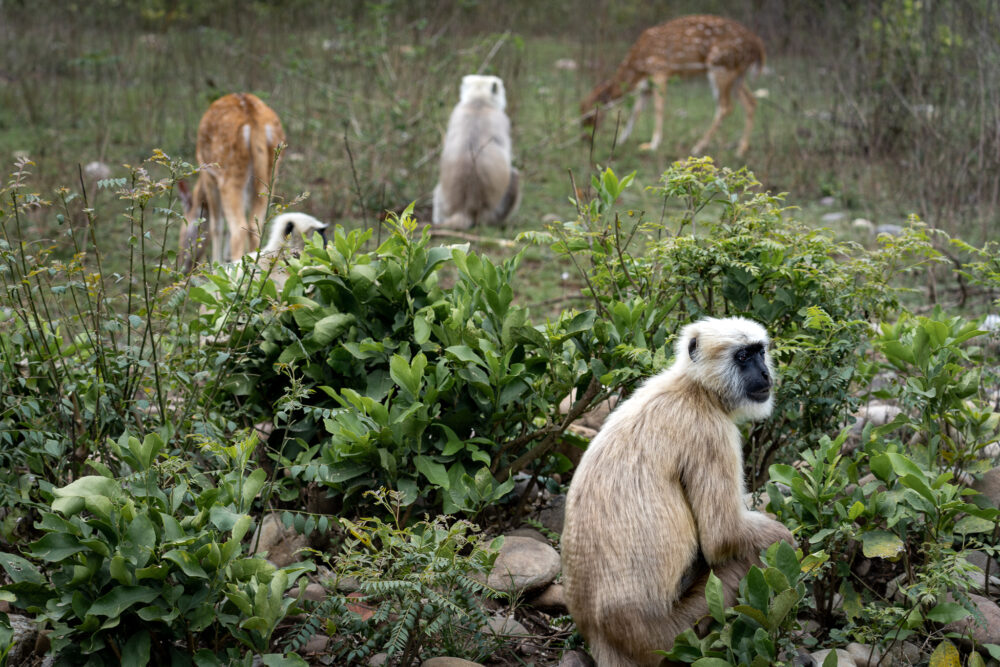
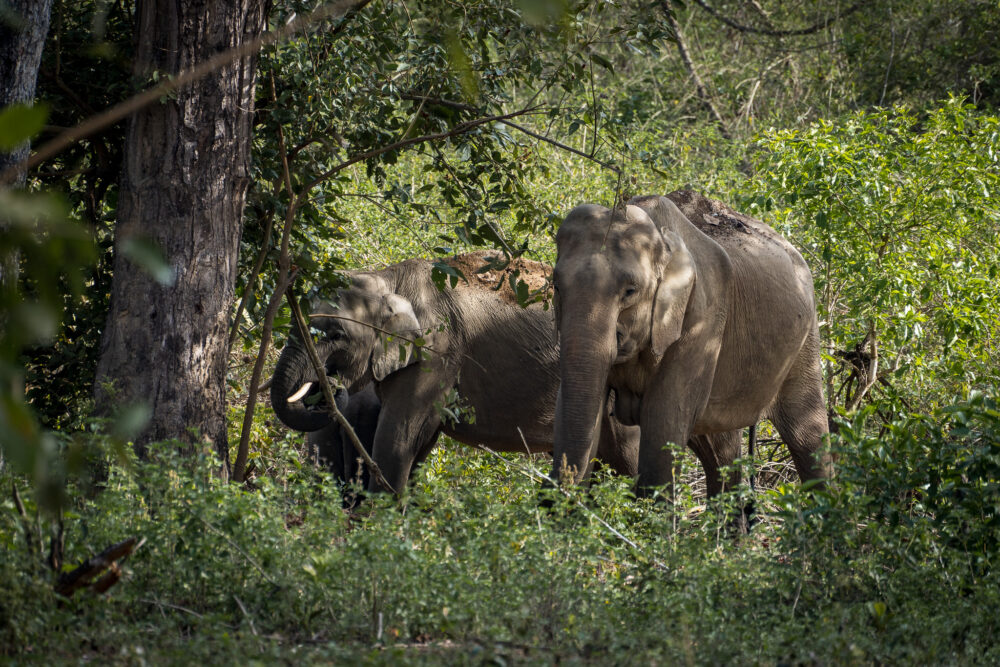
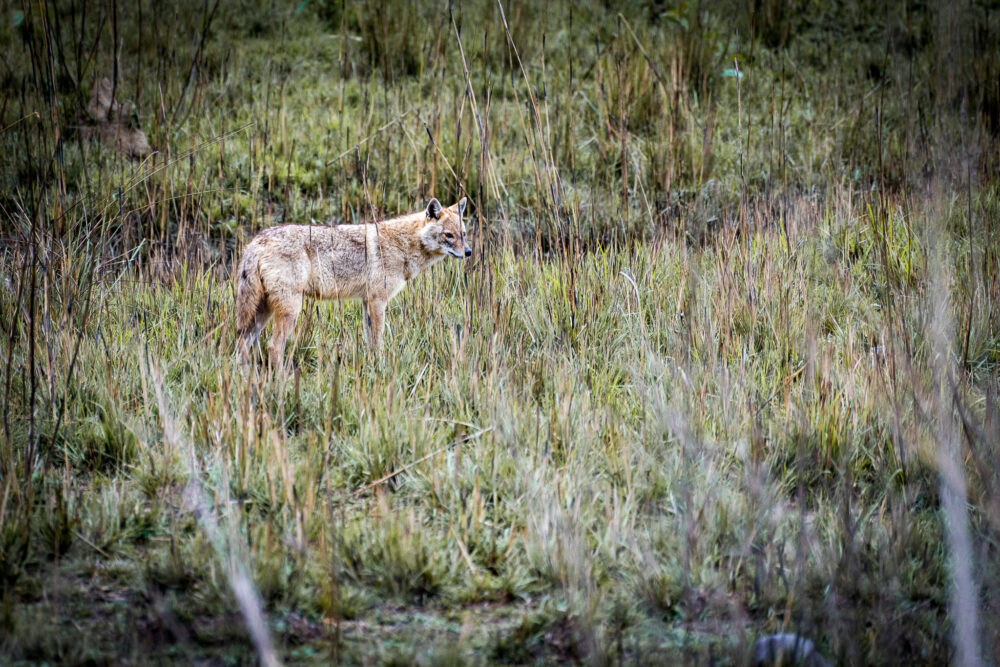
You *could* also see leopards, Asiatic black bears, Indian pangolins, fishing cats, and Himalayan black bears. It’s unlikely, but they are all technically found within the park.
How to Plan the Best Jim Corbett National Park Safari
Alright, so this is the situation. There are three kinds of safaris inside Jim Corbett National Park. The park itself is divided into 8 ecotourism zones with different safari options available in each zone.
1. The Canter Safari.
This is only available in the Dhikala zone. A canter is a large 20-person open-air bus and the most popular type of safari in the park. Dhikala is the deepest center region of the national park and the most popular zone because of the high likelihood of spotting a tiger.
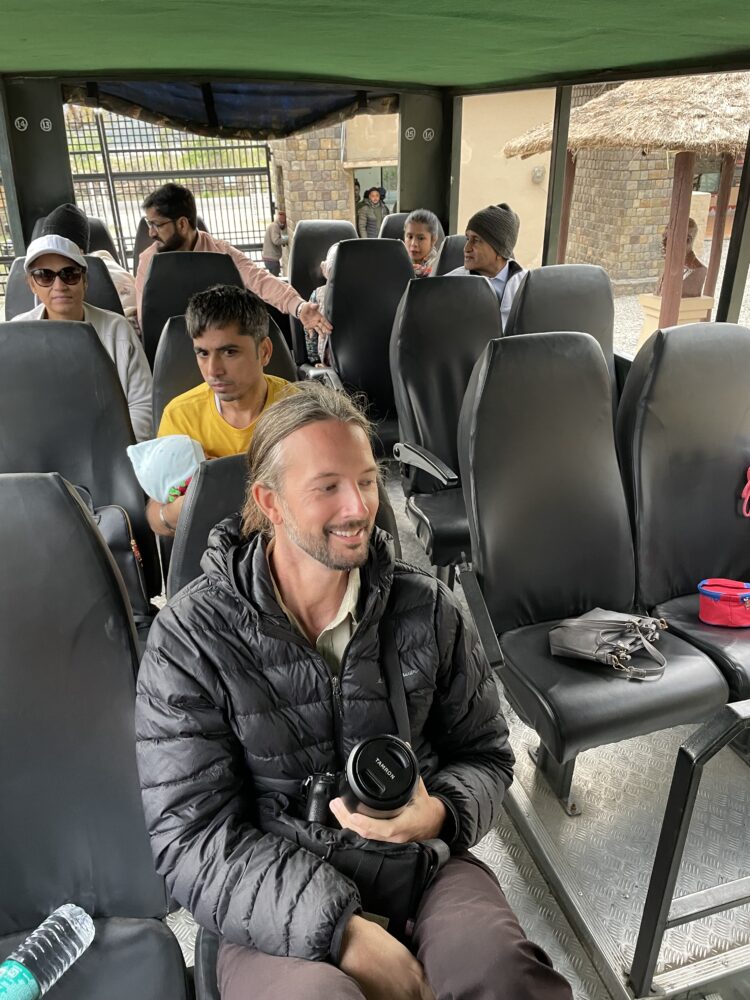
2. The private jeep safari.
This is available in all zones of the park except for Dhikala. One jeep fits up to 8 people and is reserved in advance for your group. These safari leave 2-3 times per day depending on the zone and only allow 30 vehicles inside each zone at any given time period.
3. The overnight safari.
This is the only private jeep option available in the Dhikala zone. It’s the same as above BUT you’ll sleep overnight at the ranger station within Jim Corbett to maximize your time in the park. You need to reserve this FAR in advance. It’s the first to sell out and for good reason. This is the kind of safari I recommend to those who want a good chance at spotting a tiger in an ethical way.
Which Zone of Jim Corbett National Park is Best?
Dhikala is the best zone for seeing both tigers and wild elephants. Therefore it is the best zone in the park. Bijrani is the next best option if you want to book two safaris or are unable to secure a coveted overnight safari spot.

What Safari NOT to do in Jim Corbett
Whatever you do, do not do the canter safari in Dhikala Zone. Canter safaris suck. They scare away all the animals. The assigned guides didn’t even bother looking for a single animal. And the people on board our canter were loud and seemed to not care about scaring away the wild animals we came to see. I think that local tourists (who get safaris for far cheaper) were more interested in just getting out and enjoying nature rather than spotting wildlife. They actually insisted we leave slightly early just to get some chai. Not ideal for those of us who had to shell out over $100 for the safari.
The Dhikala Zone is deep within the park and takes 2 hours just to reach it. Therefore, by the time the canter reaches the zone you have to turn right back around and drive the same way you came. Basically, the way the safari is set up is awful and not designed for optimal animal viewing. It’s just a waste of time.
The Best Safari in Jim Corbett
The overnight private jeep safari in the Dhikala zone is the ONLY way to go.
This is the most expensive option BUT you are *almost* guaranteed to see tigers. You’ll get an early morning safari as you enter the park, get to chill at the scenic ranger station during the mid-day heat, take an optional afternoon safari (for a small extra fee), sleep at the ranger station, and then take one more morning safari on your way out of the park. This is without a doubt the best bang for your buck and gives you a much less crowded experience.
Hot Tip: You must book your overnight stay 60 days in advance. This is what got us. We never plan this far ahead and by the time we thought to book it — it was full weeks in advance. It’s worth it to plan your trip around this experience if you want to see some wildlife.
How to Book Your Safari
Booking a safari in India as a foreigner is not super straightforward. You can’t use the online booking portal without an Indian bank card. We had these same problems with Gir National Park. That means you’ll have to contact Jim Corbett National Park via WhatsApp.
WhatsApp Phone: +91 99712 68452
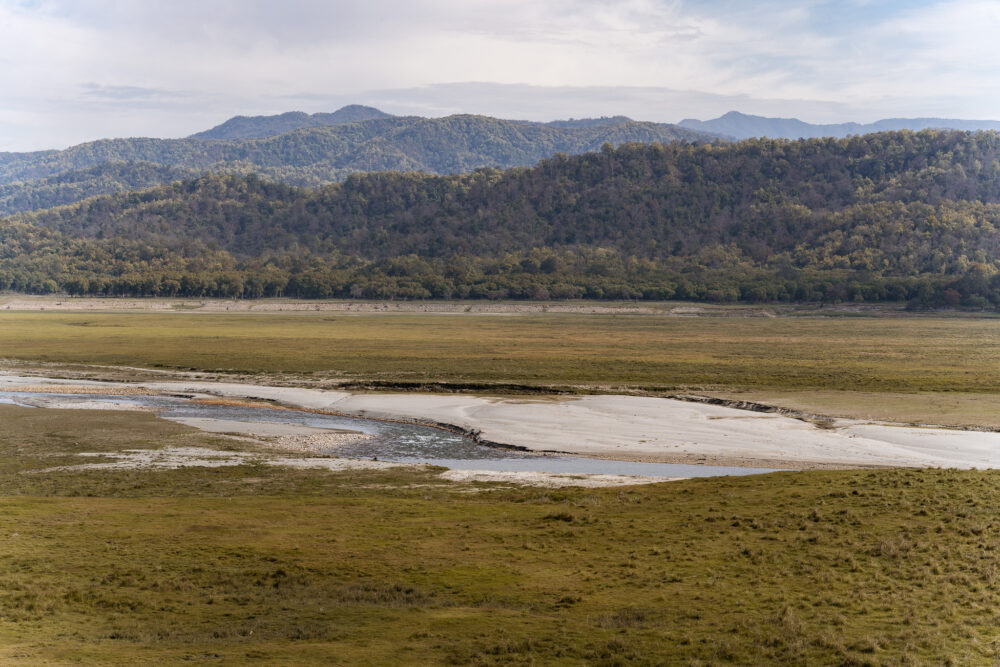
Cost Breakdown of Jim Corbett National Park Safari
We chose to do 2 safaris within the park when we realized that the overnight stay in Dhikala was sold out. We thought this would maximize our time within the park and we would see more animals. That isn’t really how it worked out and honestly, I recommend skipping the park if you can’t do the overnight stay.
The cost of an overnight stay for two people in a double bed in Dhikala is 20,000 rupees or $243.
The cost of the canter safari in Dhikala is 4200 rupees ($51) per person and the private safari in Bijrani is 10,000 rupees ($121) per jeep. The other safari zones within the park have comparable private jeep prices. This can be an affordable option if you have a large group to split the cost with.
Best Time to Visit Jim Corbett National Park
November – June the park is open for visitors. During the monsoon season, the park is closed.
The best time to visit is December – March when the weather is cool. This is good for spotting animals in the early morning as well as comfortable for you as a visitor. By June temperatures are soaring and it makes a mid-day safari really unenjoyable.
Getting to Jim Corbett National Park
Jim Corbett NP is not in the most convenient location. It’s not super close to any major tourist destination but it’s also not ridiculously far away when you consider the scale of India and other tiger reserves in the country. The two most likely destinations you’ll be coming from are Delhi and Rishikesh.
This park is far more easily accessible if you have your own mode of transport. But assuming you don’t— these are your options.
Getting to Jim Corbett from Rishikesh
There’s no quick and easy overnight bus between these destinations. There are two common routes.
Taxi: You can take a 5-6 hour taxi for 6,000 rupees ($73). An alright option if you have people to split the ride with.
Series of buses: You can take a local bus from Rishikesh to Haridwar. Then from Haridwar to Ramradar. This is the closest town to Jim Corbett. From here you’ll have to take a rickshaw to your accommodation. The price of these two buses is around 370 rupees ($3.80) per person in total. This journey takes around 6-8 hours but it’s the route I recommend.
Getting to Jim Corbett from Delhi
You have lots of options from Delhi. You can take a direct bus booked from 12.go.Asia or take a train/bus combination via the Ramnagar Rail Station.
Where to Stay Near Jim Corbett National Park
You’re going to need a place to stay before your overnight safari. We stayed at Camp Hornbill for a lot of reasons. It’s a lovely eco-conscious stay in the middle of the wilderness whose proceeds go to support the local community. It’s actually owned by a resident of the teeny village in the area.
Camp Hornbill


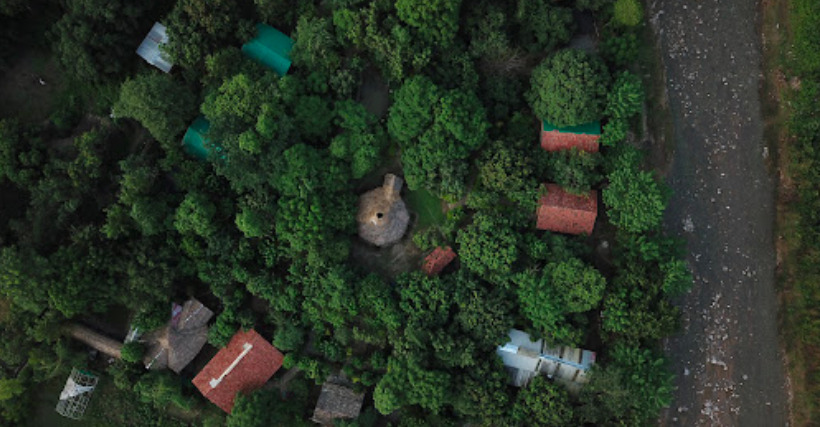
If you’re going to make the effort to stay here I recommend giving yourself 2 days outside the safari. You’ll have a chance to chill in the river, lounge in your luxury mud-style huts, eat delish local food, and explore the area with their on-site naturalist to spot some exotic bird life.
It’s a rare example of peace and quiet in nature in India.
Be warned: Getting to and from the property will cost you about 1,000 rupees in rickshaw fare unless you’re a good haggler. It’s not the most budget-friendly stay but it’s renowned across India for being a model of local sustainable tourism and I highly recommend it. Another excellent stay if you’re willing to splurge while in India is Dera Amer in Jaipur.
Overall, we could have better planned our own visit to Jim Corbett National Park. We don’t want you to make the same mistake. It’s definitely the best place to spot India’s wild tigers if the proper preparation and planning are done. Our favorite part of the experience was our lovely stay at Camp Hornbill. But follow these tips and you can have the best of both worlds.
Save This Post For Later!


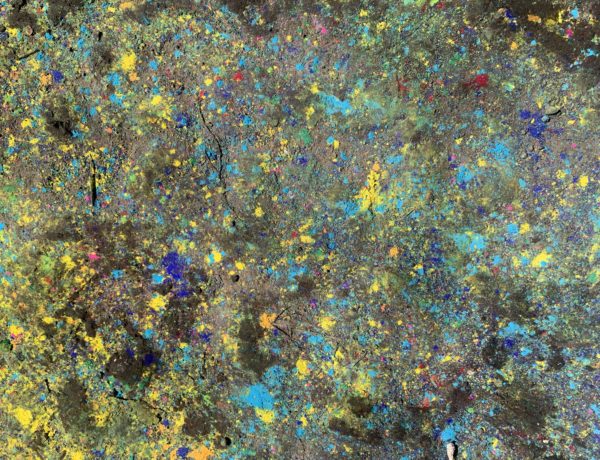
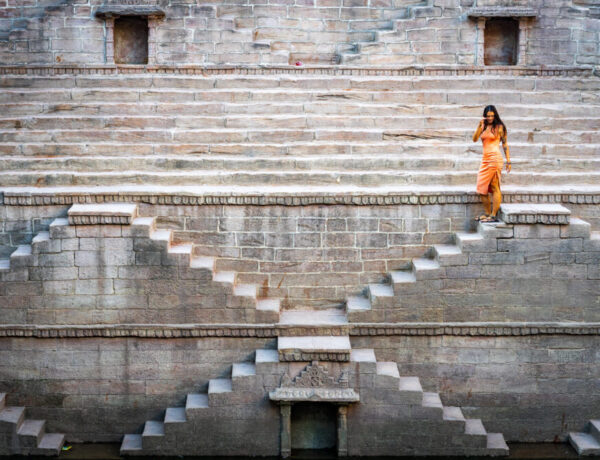



No Comments